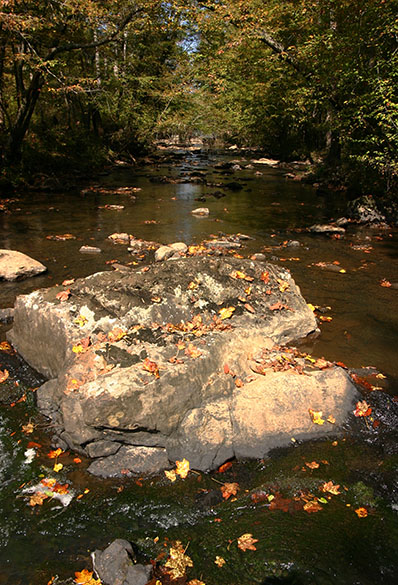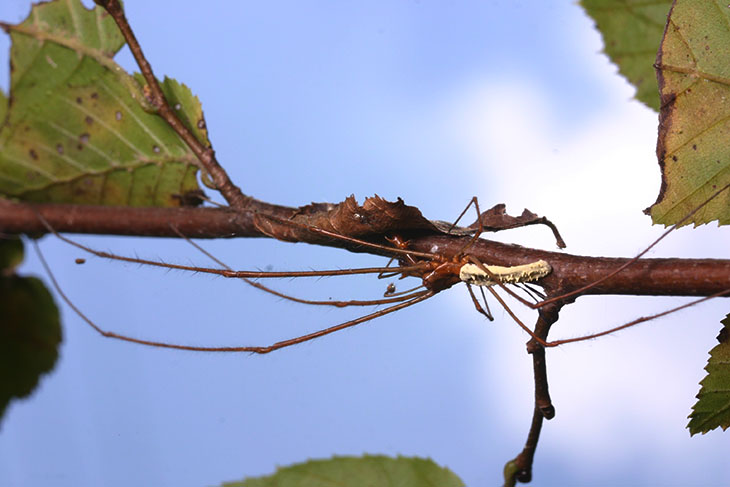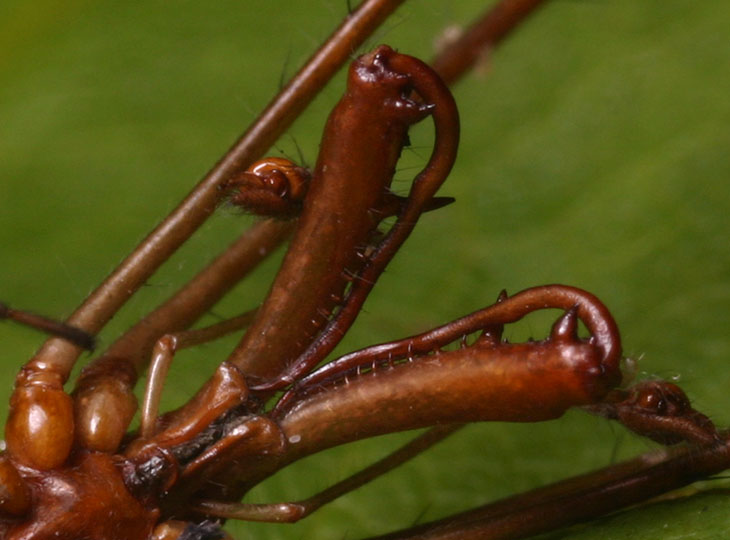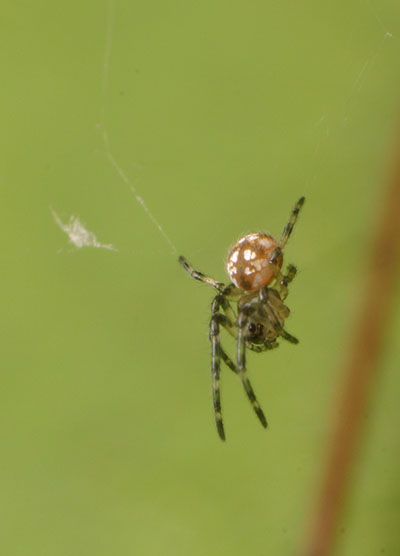 This is largely a continuation of an earlier post, where I went in too close to a particular species of spider, and I’m going to do it again. It’s all legal if I provide a warning.
This is largely a continuation of an earlier post, where I went in too close to a particular species of spider, and I’m going to do it again. It’s all legal if I provide a warning.
I went down to the river yesterday, because I hadn’t been there in a while and I wanted to see how autumn colors were progressing – the river is one of the better locations close by to see a wide variety of trees, and since it’s near a water source the trees tend to change earlier there than in other areas. Our Female Host from Savannah (sounds dramatic, doesn’t it, like sword n’ sorcery novels? “Shandor, from The Village In The North”) has said that she wants to visit when the colors are good, and now that I’ve exposed that to my thousands of readers, she’s committed, and can’t possibly back out or they’ll seek her out when she eventually starts her own blog and hound her mercilessly.
Anyway, one thing I noticed was that there was strong evidence of the water level having recently been much higher, like as much as two meters – at one point I was standing on a rock in the water and had river debris dangling from a branch at eye-level. No doubt the heavy rains we got a few weeks ago, the same storm system that flooded parts out west, had no small impact on the river here. And this may have been responsible for this next bit.

A long-jawed orb weaver spider (genus Tetragnatha) was spotted in hidey mode on a branch overhead, but it didn’t look quite right – this was because it was long dead, possibly drowned by the high waters while it clung to its perch. You can actually see the mold growing on its abdomen. However, this provided the opportunity to photograph those jaws a bit closer, without desperately dancing around a live specimen or bothering to kill one just for pics, so I collected its corpse and brought it home for a closer peek.

This is a look from the bottom, and it becomes clear that those chelicerae are used for grasping their prey. This started me wondering again, and I did some web searching, at first trying to determine if Tetragnatha venom was so weak it wasn’t able to immobilize prey, and the spider had to grapple. Eventually this led to learning something entirely new.
You see, I always thought spiders used the chelicerae (fangs) not just to inject venom, but also to suck up the liquified innards of their prey, and that they had no other mouths to speak of. I’m slightly embarrassed to find out I was wrong, and spiders do indeed have mouths, some of them even chewing up their prey as mantises do – they do not suck in anything through the chelicerae. Various species, like Tetragnatha, use them for grasping and tearing up their meals, so what you’re also seeing here, I believe, are some of the spider mouthparts, two plates extending up the base of the chelicerae. In trying to identify these positively, I have found no place online that diagrams arachnid mouths at all, and few sites that even mention anything other than chelicerae, so I don’t feel too embarrassed anymore.

Here’s a view from the top/face giving a good peek at the eye layout, though the discoloration has made them harder to distinguish – there are eight, in two rows of four. What can also be seen, in both images, are the pedipalps extending from either side of the chelicerae, long and with two joints. The one towards the top of this image has a peculiar appearance, but this is because you’re looking lengthwise down the last segment, running in and out of the short focus range at this magnification. The clublike ends indicate a male – those are the testes, but the pedipalps are also used as feelers and to manipulate prey, so presumably they’re not as sensitive as mammalian orbs. Either that or spiders really are badass.
 The body length of my Tetragnatha specimen, eyes to abdomen tip, is around 11mm – the chelicerae alone are roughly 5mm folded. The legs at maximum stretch (meaning in the straight line hidey mode that lets them blend in with water reeds and twigs) may exceed 80mm – the forelegs alone are 52mm in length. Which means that enterprising tiny spiders like the one shown at right, only a millimeter in body length, can spin a web between the legs of a dead Tetragnatha as if it’s a tree, and come along for the ride when one is collected to serve as a photo subject. She’s still there, annoyed at how often I shifted her scaffolding to get better angles but otherwise unaffected. And yes, you’re seeing a few of the eyes peeking between the legs there. If you scroll back up to the first image on the branch, she’s even visible there near the leg tips, out of focus. I suppose I might have to go hang the Tetragnatha corpse on the dog fennel, which is in bloom now, so she can catch something to eat.
The body length of my Tetragnatha specimen, eyes to abdomen tip, is around 11mm – the chelicerae alone are roughly 5mm folded. The legs at maximum stretch (meaning in the straight line hidey mode that lets them blend in with water reeds and twigs) may exceed 80mm – the forelegs alone are 52mm in length. Which means that enterprising tiny spiders like the one shown at right, only a millimeter in body length, can spin a web between the legs of a dead Tetragnatha as if it’s a tree, and come along for the ride when one is collected to serve as a photo subject. She’s still there, annoyed at how often I shifted her scaffolding to get better angles but otherwise unaffected. And yes, you’re seeing a few of the eyes peeking between the legs there. If you scroll back up to the first image on the branch, she’s even visible there near the leg tips, out of focus. I suppose I might have to go hang the Tetragnatha corpse on the dog fennel, which is in bloom now, so she can catch something to eat.



















































